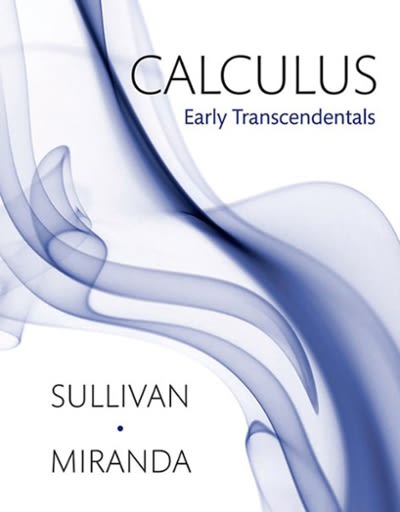Question
Q1 A high-precision laser sensor in a robot arm has a lifetime that is exponentially- distributed with an average life of 10,000 hours. What is
Q1 A high-precision laser sensor in a robot arm has a lifetime that is exponentially- distributed with an average life of 10,000 hours.
- What is failure rate of thesensor?
- What is the variance of the sensor'slifetime?
- Compute the probability that the sensor lasts more than 15,000hours?
- Compute the probability the sensor lasts between 5,000 and20,000?
- If you know that one of the sensors has lasted 7,500 hours without failure, what is the probability that it will last more than the next 4,500hours?
Q2.CallsarrivetoacustomercarecenteraccoridngtoaPossionproccesswitharrival rate of 3 calls per hour. The service time (handilng and answering the call of the customer) of the customer care employee is exponetitally-distibuted with mean 0.20hour.
Case.1: If there is only one customer care employee to answer the calls:
- Find the notation of the queuing system corresponding tocase.1?
- Draw the birth-and-death process diagram for this queueingsystem?
- Find the utilization factor of this servicefacility?
- Find the steady-state probabilities? Write theexpressions.
- Find the steady-state expected number of customers in thesystem?
- Find the steady-state expected number of customers waiting in thequeue?
- Find the steady-state expected time a customer spends in thesystem?
- Find the steady-state expected time a customer waits in thequeue?
Case.2: If there are two identical customer care employees to answer the calls:
- Find the notation of the queuing system corresponding tocase.2?
- Draw the birth-and-death process diagram for this queueingsystem?
- Find the utilization factor of this servicefacility?
- Find the steady-state probabilities? Write theexpressions.
- Find the steady-state expected number of customers in thesystem?
- Find the steady-state expected number of customers waiting in thequeue?
- Find the steady-state expected time a customer spends in thesystem?
- Find the steady-state expected time a customer waits in thequeue?
- Supposethatsubscriberswithalocalinternetserviceproviderpaytheirmonthly billsinasalespointinthecitycenterofRamallah.Assumethattherearetwoidenticalserversin thesalespoint,eachhavinganexponentialservicetimewithrate=1/2perhour.Also,suppose the arrival rates per hour are as follows: 0= 1, 1= 1, 2= 1/2, 3= 1/3 and k= 0, k = 4, 5, 6,......
- Draw the birth-and-death process diagram for this queueingsystem?
- Find the steady-state probabilities of this system? (Hint: use the equation inrate
equals out ratebalance equations to find the probabilities).
- What is the average arrival rate in steadystate?
- What is the expected number of customers (subscribers) in the system? Hint: again use the basic definition of expected number of customers and the steady state probabilities you found in part(2.)).
Step by Step Solution
There are 3 Steps involved in it
Step: 1

Get Instant Access to Expert-Tailored Solutions
See step-by-step solutions with expert insights and AI powered tools for academic success
Step: 2

Step: 3

Ace Your Homework with AI
Get the answers you need in no time with our AI-driven, step-by-step assistance
Get Started


